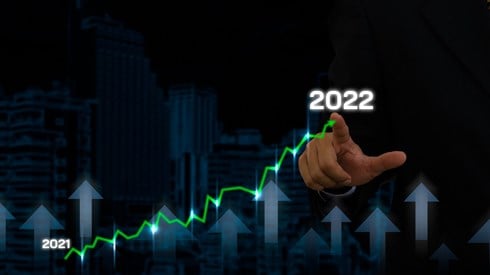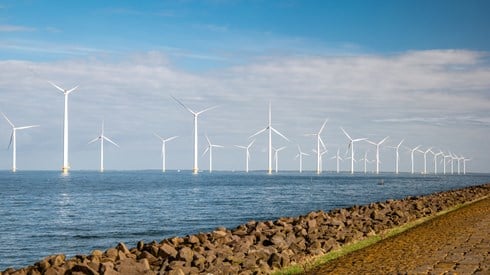Report Highlights Ongoing Value of Captive Insurance as Markets Change

November 23, 2022

A recent report from A.M. Best underscores the ongoing value of captive insurance companies in the face of a hardening commercial insurance market and evolving risks.
In a Best's Market Segment Report examining the universe of European captives rated by Best, the rating agency notes that captives have proved their worth as commercial markets harden.
"Commercial insurance rate increases are driving an uptick in the use and importance of captives, as tools to provide their owners with the flexibility to navigate the insurance cycle and maintain access to cover on an ongoing basis," Best says in the November 22, 2022, report, titled "Europe's Captives Show Their Worth Amid Changing Market Dynamics."
The report notes that captive insurance companies have always been important risk management tools for their owners. In hard periods of the insurance cycle, they can offer tailored risk solutions for their parents in lines of business where commercial market capacity has contracted, where prices have become too expensive, or where coverage might have become unavailable, Best says.
Captives also provide their parents with access to reinsurance markets, the report says, and can provide an efficient vehicle for managing the risks their parents are willing retain relative to the cost of coverage.
Price increases began to appear in some segments of the commercial insurance market as early as 2018, the Best report says, with the market continuing to harden over subsequent years, with tightening of terms and conditions appearing alongside higher rates.
While price increases started to moderate in 2021, some coverage lines are still seeing strong price increases, Best says, and commercial insurers are expected to continue seeking price increases at 2023 renewals as they look to keep pace with inflation.
"A.M. Best has observed an uptick in the use of existing captives in response to the hardening market conditions, as owners seek optimal risk transfer solutions," Best says. "Several captives have increased retentions or limits on existing cover, as well as expanded into new lines of business as their parents have looked at increasing captive utilization."
Best goes on to say that it's also seen some parent companies—which used their captives selectively and sparingly in the soft market—have changed their strategy. "In the hardening market, captives have become central to the insurance buying process of some of those parents," the Best report says. "In some cases, this has led to a reorganization of departments in the parent company to ensure the full integration of insurance and reinsurance purchasing decisions and captive management."
In such an environment, captives must ensure that they can continue to support their parents' risk management strategy, largely by maintaining underwriting expertise as well as sufficient capital levels to cover any increases in underwriting or catastrophe risk that might be associated with writing additional business.
While the hardening commercial insurance market provides opportunities for captive insurance companies to demonstrate their value, it also presents challenges, Best says.
"Many captives are highly dependent on reinsurance capacity to be able to offer the large limits required by their parent groups," the report says. "The reinsurance market has trailed the commercial and specialty insurance markets in terms of price increases over recent years, but with significant catastrophe losses and inflation concerns affecting 2022, the market is now set to harden further."
Even captives with good claims records are likely to see price increases in their 2023 reinsurance renewals, Best says. Capacity remains available, however, and most captives have strong relationships with their reinsurance partners, which further mitigates the risk of shrinking reinsurance capacity.
The Best European captive report also addresses the fact that the environmental, social, and governance (ESG) issues that are affecting captive parents could also have knock-on effects on the captives themselves.
"To a large extent, captives' ESG typically reflect the risk profile and the ESG strategy adopted by their parent company," the Best report says. "These can vary widely from one industry to another."
The report says Best has seen captives increasingly integrating ESG elements into their strategies both in terms of risks and opportunities, notably in terms of underwriting.
"For physical risks, captives (like traditional insurers and reinsurers) need to consider their exposure to climate risk and understand how changing patterns of frequency and severity of weather-related events could affect their financial strength," the report says. "Captives writing primarily liability business—with limited catastrophe exposures—need to be aware of the potential for ESG-related litigation and the impact of social inflation, both of which could impact their performance, and ultimately, balance sheet strength."
Captives might also want to monitor the transition risk associated with the policy, legal, technology, and market changes associated with a transition from a high- to a low-carbon economy, the Best report says.
"Management of transition risks by a captive's parent, notably in industries such as oil and gas, can impact their insurance needs," the report says. "Against this background, captives are under more pressure to innovate and keep abreast with underwriting developments to cater for the changing needs of their parents' evolving business models.
While that transition risk could have an impact on how easily captives can get access to commercial (re)insurance markets, captive insurance company parents with "clear and credible" plans to manage their transition risk should be well positioned to maintain good access to commercial (re)insurance markets, Best said.
"That access would enable their captives to continue to use fronters or reinsurers to manage their group's overall retention," the report says.
Ultimately, these transition risks could lead companies to retain more risk, Best said, potentially leading to increased use of their captives.
November 23, 2022







